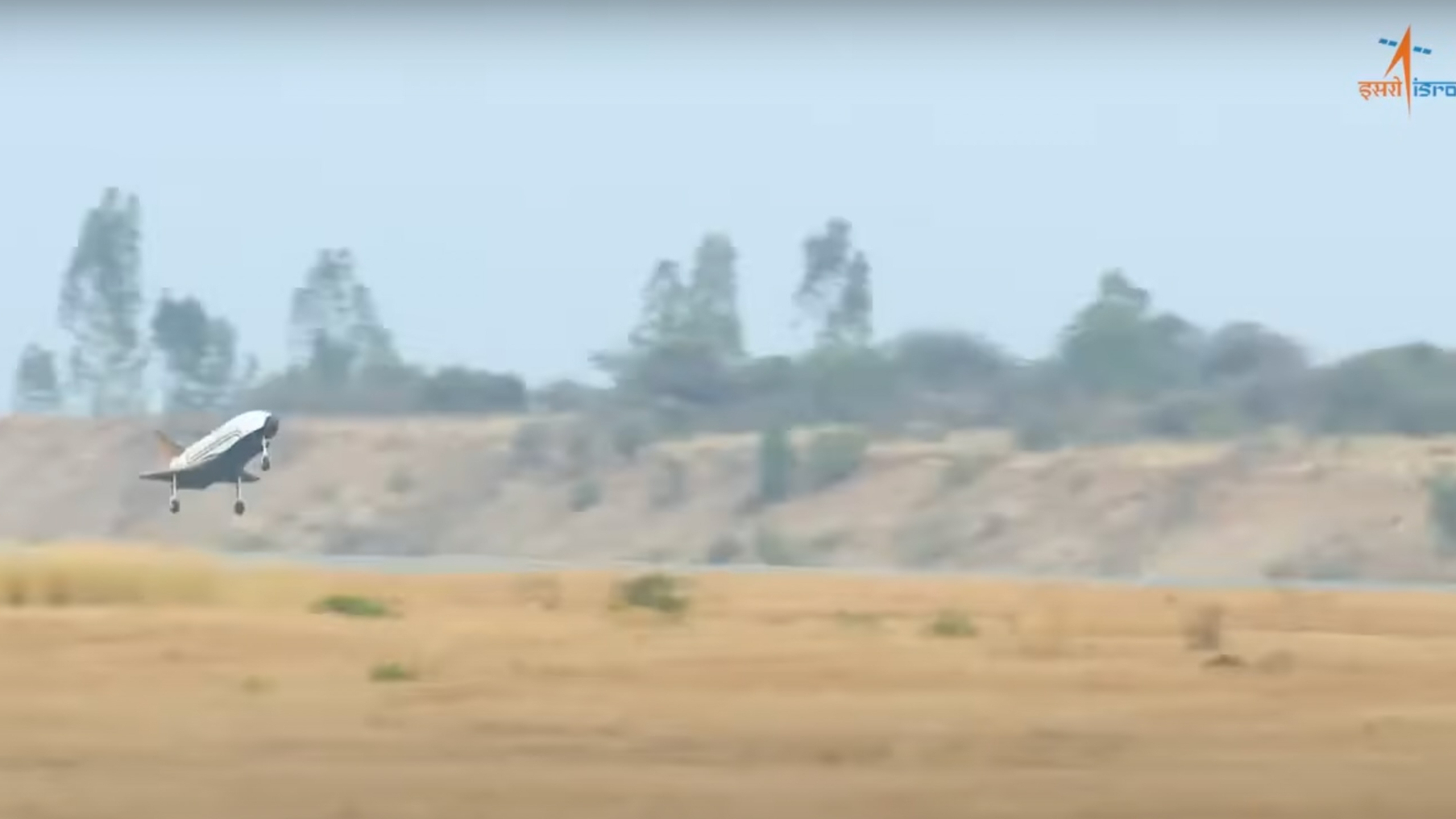Watch India's prototype space plane ace a landing test (video)
The vehicle reused systems from a test flight last year.
India has taken a big step forward in its development of a reusable space plane.
The Indian Space Research Organisation (ISRO) successfully carried out its second RLV Landing Experiment (RLV-LEX-02) on March 22, the agency announced. The mission is part of a plan to make access to space more affordable.
The 21-foot-long (6.5 meters) prototype space plane, known as Pushpak, was released by an Indian Air Force Chinook helicopter at an altitude of 2.8 miles (4.5 kilometers) and autonomously landed on a runway 2.49 (4 km) away. The spacecraft came to a stop using a brake parachute, landing gear brakes and nose wheel steering system.
Related: India successfully lands reusable space plane prototype for 1st time (video)

The test is a followup to a 2023 test, also held at the Aeronautical Test Range (ATR) in the southwestern state of Karnataka. But this time Pushpak needed to undertake more difficult maneuvers, including employing cross-range and downrange corrections and touchdown on the runway in a fully autonomous mode.
This second test mission validated various indigenous technologies critical for a high-speed autonomous landing of a space-returning vehicle, according to ISRO. The mission also reused the winged body and all flight systems from the first test, showcasing their reusability.
S Unnikrishnan Nair, director of the Vikram Sarabhai Space Centre (VSSC), which led the test, said in an ISRO statement that the repeat success demonstrated that ISRO can master terminal phase maneuvering, landing and energy management in a fully autonomous mode, marking a critical step toward future orbital reentry missions.
Get the Space.com Newsletter
Breaking space news, the latest updates on rocket launches, skywatching events and more!
ISRO began work on the space plane project in 2019. The agency aims to scale up the vehicle to become part of a reusable two-stage orbital launch system by the end of the decade.
A number of other countries are engaged in space plane activities. The U.S. Space Force's robotic X-37B is currently on its seventh flight and its first high-orbit mission after a December launch atop a SpaceX Falcon Heavy rocket, while China's own mysterious space plane just passed 100 days in low Earth orbit.
Join our Space Forums to keep talking space on the latest missions, night sky and more! And if you have a news tip, correction or comment, let us know at: community@space.com.

Andrew is a freelance space journalist with a focus on reporting on China's rapidly growing space sector. He began writing for Space.com in 2019 and writes for SpaceNews, IEEE Spectrum, National Geographic, Sky & Telescope, New Scientist and others. Andrew first caught the space bug when, as a youngster, he saw Voyager images of other worlds in our solar system for the first time. Away from space, Andrew enjoys trail running in the forests of Finland. You can follow him on Twitter @AJ_FI.
-
Cdr. Shepard Apparently NASA was wrong to retire the shuttle? Seems it's all the rave on the other side of the world.Reply -
Atlan0001 Space planes taking people (though not 76 years old me), in space shuttle evolutions and revolutions, will shuttle people back and forth to space. That is, unless, like the U. S. Shuttle, programs are simply wiped out through the complete shortsighted blindness inherent to totalitarian (closed systemic) governmental stupidity.Reply -
Goryar It looks like a teenage X-37 with somewhat disproportionate legs, but ISRO once again surprises with its low-cost approaches, they go slow but sure.Reply









